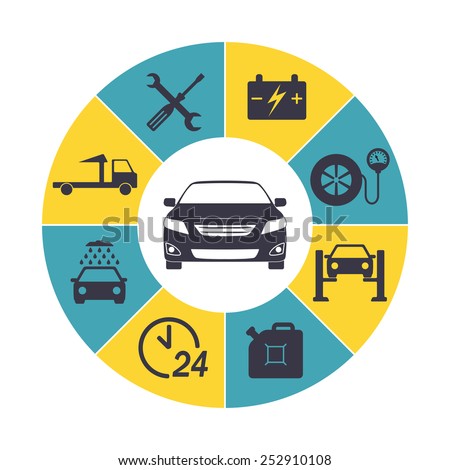Analyzing Your Vehicle'S Warning Indicators: What They Really Communicate
Analyzing Your Vehicle'S Warning Indicators: What They Really Communicate
Blog Article
Material Produce By-Higgins Kejser
When you lag the wheel, those radiant warning lights on your dashboard can be a bit puzzling. Do you understand what they're attempting to tell you regarding your car's health and wellness? Understanding the importance of these lights is crucial for your security and the durability of your car. So, the following time one of those lights turns up, would not you want to decode its message accurately and take the needed steps to address it?
Common Caution Lighting and Interpretations
Recognize usual warning lights in your cars and truck and recognize their definitions to guarantee safe driving.
The most common warning lights include the check engine light, which signifies problems with the engine or emissions system. If this light begins, it's vital to have your automobile examined promptly.
The oil stress advising light suggests low oil pressure, needing immediate focus to stop engine damages.
A blinking battery light may suggest a malfunctioning billing system, potentially leaving you stranded if not attended to.
mouse click the following web site monitoring system (TPMS) light signals you to reduced tire stress, influencing vehicle stability and fuel performance. Disregarding this might lead to harmful driving conditions.
The abdominal muscle light suggests an issue with the anti-lock braking system, endangering your ability to quit swiftly in emergencies.
Finally, the coolant temperature cautioning light warns of engine getting too hot, which can result in extreme damages if not dealt with swiftly.
Understanding these typical warning lights will certainly aid you attend to problems immediately and preserve secure driving conditions.
Value of Prompt Attention
Understanding the typical caution lights in your car is just the initial step; the importance of immediately addressing these warnings can not be emphasized sufficient to ensure your safety when traveling.
When a warning light illuminates on your control panel, it's your cars and truck's means of communicating a potential concern that requires focus. Overlooking https://www.ratchetandwrench.com/articles/12626-morris-auto-parts-turns-100 can cause much more serious problems in the future, compromising your security and potentially costing you much more out of commission.
Trigger focus to advising lights can prevent break downs and mishaps. For example, a flashing check engine light might indicate a misfire that, if left ignored, can cause damages to the catalytic converter. Resolving this quickly can conserve you from a pricey repair.
Likewise, a brake system advising light may indicate reduced brake liquid or used brake pads, important parts for your safety when driving.
Do It Yourself Troubleshooting Tips
If you notice a warning light on your control panel, there are a few do it yourself repairing pointers you can try prior to seeking specialist aid.
The very first step is to consult your vehicle's handbook to comprehend what the details warning light indicates. Often the issue can be as straightforward as a loosened gas cap causing the check engine light. Tightening up the gas cap may fix the issue.
One more typical issue is a reduced battery, which can cause different alerting lights. Inspecting the battery connections for deterioration and ensuring they're protected could repair the trouble.
If a caution light continues, you can attempt resetting it by separating the automobile's battery for a couple of minutes and then reconnecting it. Furthermore, checking your automobile's liquid degrees, such as oil, coolant, and brake fluid, can help troubleshoot cautioning lights related to these systems.
Conclusion
In conclusion, comprehending your auto's warning lights is crucial for keeping your vehicle running efficiently and safely. By immediately addressing these informs and recognizing what they mean, you can avoid costly repairs and potential malfunctions.
Keep in mind to consult your vehicle's guidebook for particular information on each cautioning light and do something about it accordingly to make certain a trouble-free driving experience.
Stay informed, stay risk-free when driving!
